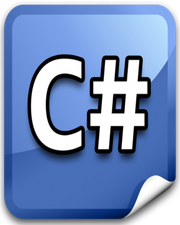How to Get Hostname from URL in Javascript
In this tutorial, you will learn how to get hostname from url in javascript. Hostname represents a domain name assigned to a computer. Each domain name points to a specific IP address.
Whenever you enter a domain name in the navigation bar, the browser sends a request to the DNS provider which resolves it to an IP address and loads the website.
There are various ways to extract a hostname from a URL string. You must have seen most of the solutions on the internet recommend using regex to do so but there is no universal solution that can extract a domain as well as a subdomain from a URL string.
To accomplish our goal, we are going to use a URL object. This object has a hostname property that will return a domain or subdomain depending upon the URL string.
In the following example, we will enter a random URL in the input field. Upon click of a button, we will extract the hostname and display it on the screen. Please have a look over the code example and the steps given below.
HTML & CSS
- We have 4 elements in the HTML file (
div,input,button, andh1). Thedivelement is just a wrapper for the rest of the elements. - The
buttonelement and theh1element have“Get”and“Result”asinnerTextrespectively. TheinnerTextof theh1element will be updated dynamically using javascript. - We have done some basic styling using CSS and added the link to our
style.cssstylesheet inside theheadelement. - We have also included our javascript file
script.jswith ascripttag at the bottom.
<!DOCTYPE html>
<html lang="en">
<head>
<meta charset="UTF-8">
<meta name="viewport" content="width=device-width, initial-scale=1.0">
<link rel="stylesheet" href="style.css">
<title>Document</title>
</head>
<body>
<div>
<input type="text">
<button>Get</button>
<h1>Result</h1>
</div>
<script src="script.js"></script>
</body>
</html>
body {
text-align: center;
}
div {
display: inline-block;
}
input, button {
display: inline-block;
padding: 10px 20px;
}
Javascript
- We have selected the
input,button, andh1elements using thedocument.querySelector()method and stored them in theinput,btnGet, andresultvariables respectively. - We have attached a
clickevent listener to thebuttonelement. - In the event handler function, we are getting the value from the
inputelement usingvalueproperty and storing it in thevaluevariable. - We are using the URL constructor to create an instance of a
URLobject and we are passing it thevaluevariable as a parameter. TheURLobject is stored in theurlvariable. - We are using the
hostnameproperty to get the hostname fromurland displaying it in theh1element using theinnerTextproperty.
let input = document.querySelector('input');
let btnGet = document.querySelector('button');
let result = document.querySelector('h1');
btnGet.addEventListener('click', () => {
let value = input.value;
let url = new URL(value);
result.innerText = url.hostname;
});
